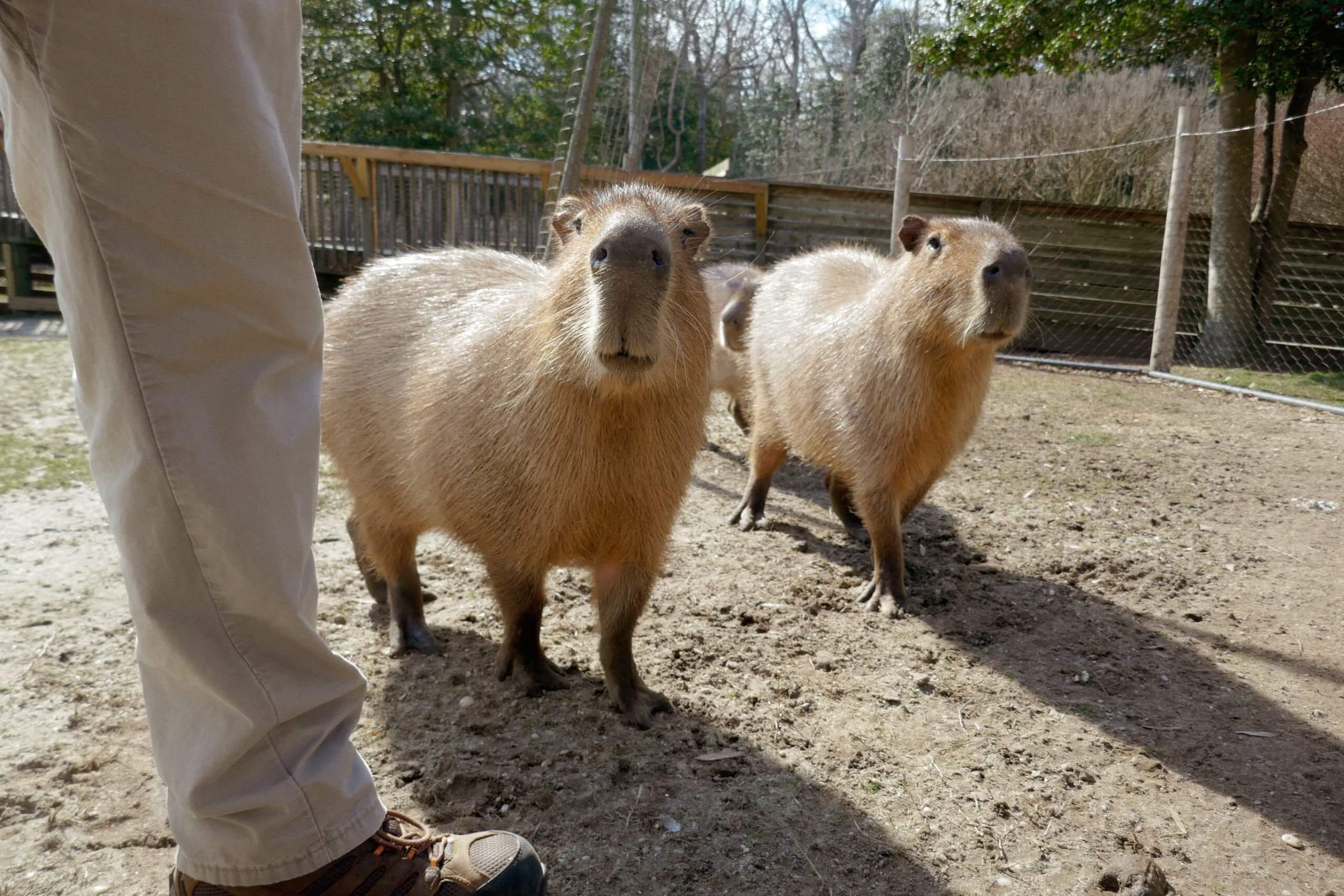COURT HOUSE – Stephanie Schnitzler, a Senior Animal Keeper at the Cape May County Zoo, said that the dorky capybara – the largest rodent species on earth – has become an internet sensation, and that the zoo’s four capybaras (Buttercup, Budette, Marigold, and Goomba) are like celebrities. Stephanie is responsible for their care, and for the care of all the animals in the “K” section of the zoo: macropods, which includes wallabies and kangaroos, and ratites, flightless birds that co-exist with them.
Capybaras are goofy and cute, but they are still wild animals, Stephanie stressed. They do stuff like eat their own poop (actually a good thing for their digestion), and can be skittish when strange humans approach. But they are familiar with Stephanie and come right up to her when they know it’s time for a bamboo meal.

Stephanie pays close attention to each Capybara’s health through regular enrichment and training. The capybaras go through daily activities, with a particular focus on Goomba, a recent transfer who will eventually mate with Marigold. The two are slowly getting to know each other, but the process takes months.
The capybaras live in an enclosure with turtles, who call the pond in the habitat home. These turtles feed on capybara stool. They also live with a rhea, also known as a South American ostrich.

Stephanie has a close relationship with all the animals in her care, which includes a “mob” of wallabies. All of the wallabies at the zoo have been under her care since they were either born or transferred here from another zoo. She chats with them and chastises them when they act up. Wallabies box with each other for fun, but sometimes can take it too far, especially if a male is “intact,” as is the case for the zoo’s albino wallaby Ghost. He has trouble seeing in the daytime because of excess pigmentation in his eyes. But that doesn’t stop him from throwing punches.
Wallabies are excellent climbers – they browse for edible vegetation with jumps up to six feet high. They are also excellent swimmers and are very intelligent. The zoo has a large trunk full of toys for them, each designed to stimulate the imagination. They are similar to dog toys, where a treat is placed inside as a prize to be won.

Plans are underway to expand the wallaby area, incorporating a larger walkway past the wallaby exhibit and a larger habitat. This expansion reflects the zoo’s commitment to creating enriching environments that cater to the physical and psychological needs of these cute animals who live far away from their natural homes.
Grant, an emu who lives in the kangaroo enclosure just across the way from the wallabies, can be especially problematic. Emus “imprint” on their parents, which in this case, means he is obsessed with attention from Stephanie. Sometimes, that means he performs a mating ritual with her in mind. But she is quick to push off his attention.


Grant’s presence in the kangaroo habitat was dramatic at first. Roothie, a female red kangaroo, was incredibly stressed out by his presence when they were first introduced, but things have settled down. These days, Roothie even dares to steal greens from Grant’s mouth. They often relax next to one another, stress-free. Kangaroos spend much of their waking hours lounging in the sun, with legs splayed out like a goofy house cat.
Stephanie has worked at the zoo since 2017 when she transferred from the Kansas City Zoo. There, she worked with intact kangaroos. Her seven years at the Cape May County Zoo means she has formed an intense bond with her animals. “That’s one of the most fulfilling things, slowly forming a bond with these animals over time,” she said.
“I have every macropod, marsupial, wallaby book known to man. They wanted someone with experience and passion.”
Visit the wallabies, red kangaroos, emus, rheas, and capybaras at the Cape May County Zoo – open every day of the year except Christmas.








